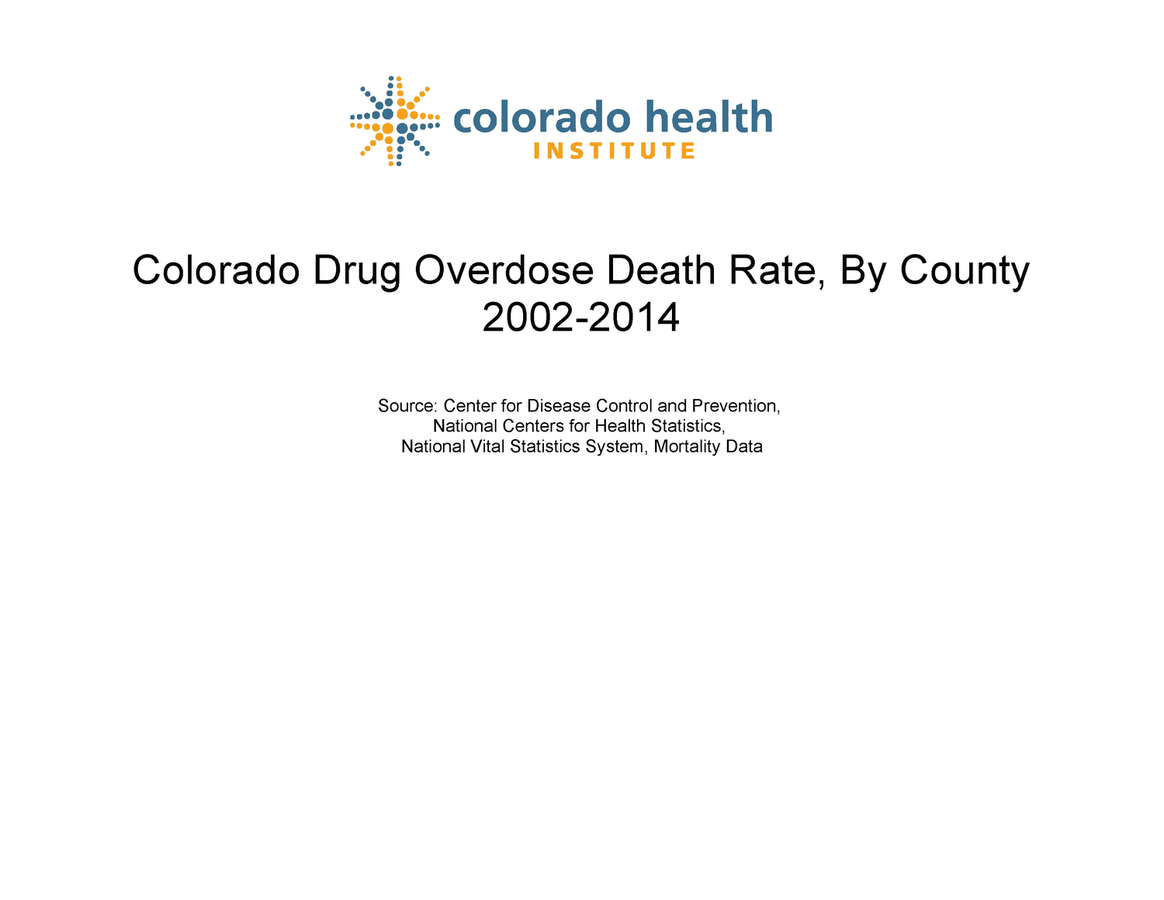New Data Reveal Grim State of Drug Overdoses in Colorado
When Maggie Bailey and I first analyzed drug overdose deaths in Colorado counties over the past 13 years, we were shocked by the dramatic changes revealed by the time-lapse map we created to present the data.
And when we saw the stunned reactions from our CEO, Michele Lueck, and Vice Presidents Deb Goeken and Amy Downs, we knew that the time lapse had conveyed what data in table form could not. They asked to rerun the animation, and we again watched as the state shifted from light red — lower rates of drug overdose death — to a much darker shade.

Colorado’s drug overdose death rate has risen by more than 60 percent, from 9.7 per 100,000 residents in 2002 to 16.3 per 100,000 residents in 2014.
Our analysis is based on new data of county-level estimates from the Centers for Disease Control and Prevention. The CDC adjusted the death rates for age. Because different diseases or causes of death may be more likely to occur in a certain age bracket, it is helpful to age-adjust in order to prevent data from being biased simply because a population skews older or younger.
At the county level, these age-adjusted death rates are available as a range per 100,000 residents. CHI took these ranges and created categories, from lowest to highest, to present the data in a more understandable form. For example, a rate of 0.0-2.0 was given a Category 1 and a rate over 20 was given the highest Category of 11.
You can find the category for each of rate range and our analysis of the data in the accompanying report. Data for all counties and years is available for download.
We know that behind these data are stories from across the state about efforts to fight this growing problem. Kristin Jones, assistant director of communications at The Colorado Trust, told some of these stories on the Trust’s blog. During a series of Colorado Trust-sponsored meetings in southern Colorado — the region with the highest overdose death rates — residents cited drug and alcohol abuse as one of their biggest challenges, she writes.
Look for more analysis from CHI this year as we dig deeper into the data on this alarming trend. Until then, what questions do this data bring up for you? What more do you want to know?
